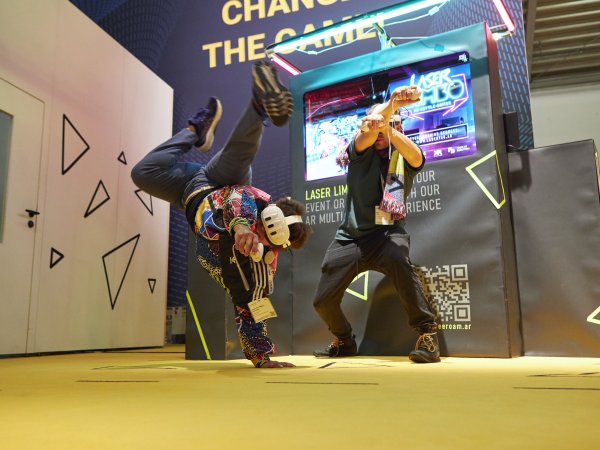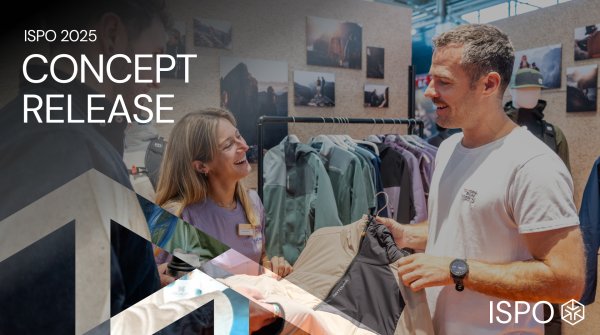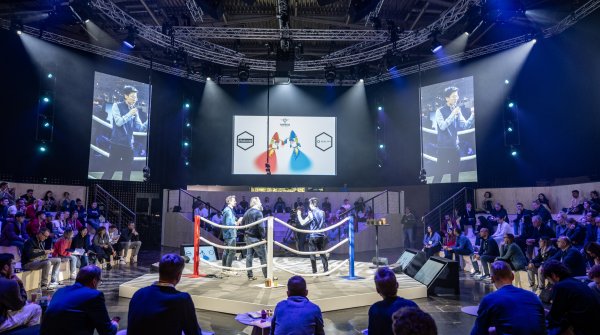To make one thing clear in advance. The use of virtual reality cannot replace Talent and perseverance in training. Endurance athletes will need to train many hours a week to improve their maximum oxygen capacity or anaerobic endurance capacity. Similarly, training on the ball is essential for professional footballers; for gymnasts, it is the uneven or balance beam. VR training is generally intended as a supplementary tool. Virtual training enables athletes to develop, improve or even perfect skills in a controlled and realistic environment. This has many advantages.
- Realistic simulations:
VR allows athletes to simulate realistic training situations without the risk of injury or fatigue. For example, soccer players can play through various game scenarios in a virtual environment, test their decisions under pressure and analyze the tactics of their opponents. Tennis players, on the other hand, can practise their serves and returns. That shows: VR in sports can help to improve technical skills and optimize reaction times. - Improve automatisms:
VR training allows to repeat specific game situations as often as required. This is particularly useful for refining certain techniques. - Tactical analysis and match preparation:
Coaches can record game scenes and re-enact them in a virtual environment to give athletes a better understanding of their opponent's strategies. This type of analysis helps athletes to better prepare for upcoming matches and refine their own style of play. - Analyzing performance:
VR systems can collect data on athletes' movements and reactions, which can then be used to analyze performance. These analyses help coaches to provide targeted feedback and optimize training plans. - Mental training:
VR tools offer athletes* the opportunity to train their concentration and stress management in simulated competition situations. By replicating the pressure of competition, athletes can learn to deal with nervousness and distractions.
This is particularly important in sports such as tennis, golf or shooting, where the mental aspect often makes the difference between winning and losing. - Rehabilitation after injuries:
Tailored VR programs allow athletes* to improve their movement and strength while training their balance and coordination without having to overexert themselves physically. This not only helps in rehabilitation, but also in preventing future injuries. So much for the theory. But in fact, new training opportunities have opened up for many athletes in practice. Compared to conventional computer screens, VR training enables much greater immersion in the virtual environment. The separation from the real world and high-fidelity software lead to a much more intense and physical experience compared to simply "viewing" video and application content on a conventional screen.
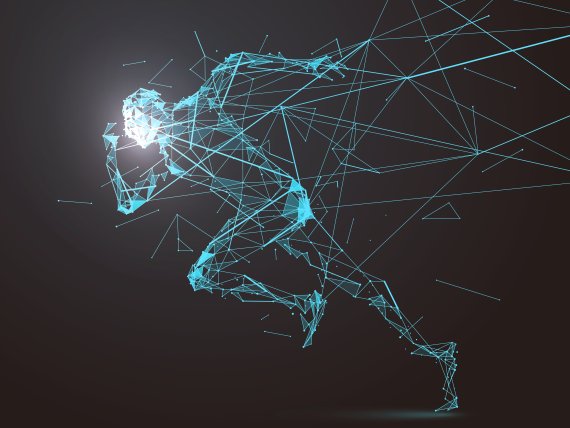
VR is already part of training practice at the Austrian Ski Association. Ski racers use VR goggles to relive and analyze races they have already completed or to prepare and practice for upcoming races. That's smart, because every downhill run holds
ski racers* a certain risk of injury. This use of VR also saves resources. This small example alone shows the potential of this technology.
A few years ago, VR glasses were used in a study at Bishop's University to improve decision-making in young basketball players. Participants were shown videos of set plays and had to decide which action they would take next at the end of the clip. Players who had watched the videos in VR made significantly better decisions on the court than those who had only watched the moves on conventional screens.
The DFB Academy also identified improved decision-making as a use case in a two-year project with the U16 juniors. By creating a 360° world with images from a real game, the players are supposed to concentrate on the preliminary orientation. Although they have to physically look around, they don't have to move in any other way, so the training is very low-impact. Toni Kroos was a master of pre-orientation during his active career, as he knew where to pass the ball at all times. An important skill for professional footballers who want to be among the world's best.
Especially in sports such as soccer, where making the right decisions is of great importance, VR training can be used to explore all decision-making options with the help of artificial intelligence (AI). Here you can experiment with different passing or running decisions to find out how they would have changed the outcome of the respective game scenario. AI algorithms could use the information about the time before the decision was made to simulate what would probably have happened with any other possible decision. Highly complex, highly technical and highly exciting.
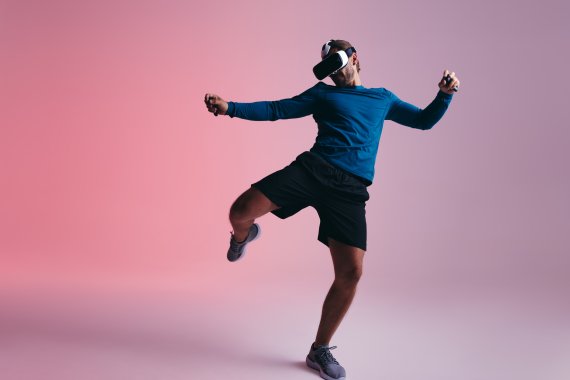
Individual sports have also long since picked up the ball. Mischa Zverev, former professional tennis player, manager and brother of Alexander Zverev, reports on the methods and effectiveness of VR training in tennis. "We focused on a combination of VR glasses and practice-oriented neuroathletic exercises. We quickly realized the effectiveness felt the effectiveness. Basically, the aim is to improve the movement patterns of a body that are not possible with conventional training methods. The great opportunity of the virtual exercises with the glasses is that they are playful and we can use the data collected to make the exercises sustainable," says Mischa Zverev.
His brother Alexander Zverev has just won the Masters in Paris and is now ranked number two in the world. For Alexander Zverev, neuroathletics and coach Lars Lienhard are an important part of his success. Neuroathletics training with VR glasses has several advantages for Alexander Zverev. Firstly, it allows him to train automatisms, which are particularly important in tennis. On the other hand, VR training also has a very practical advantage when it comes to training with individual coach Lienhard: "Lars only exists once in the world and whether you're in New York or Australia, he can't always be in the same place. With the VR glasses, I can still train with him."
Alexander Zverev is working together with IMPROVR. The Munich-based company specializes in athlete training with VR and relies on software that is primarily designed to improve cognitive skills. The two Zverev brothers will give more insights into this at ISPO Munich 2024, where they will be guests on December 4 and explain how to "train intelligently" these days.
Despite all the possible applications and potential advantages over conventional training methods using video, VR training should not be overused. Sessions longer than 30 minutes can cause nausea or headaches, known as cybersickness. This often happens when there is a mismatch between what viewers see and what is reported back to the brain via the sense of balance in the inner ear. Even though the hardware is generally becoming more affordable and lighter, current VR glasses currently weigh between 500 and 600 grams. This can lead to discomfort during longer training sessions as it puts too much strain on the athlete's neck muscles. This can be counterproductive, especially when it comes to training automatisms.
Experts currently also advise against using VR to train fine motor skills. A lack of haptic feedback and imperfect "pseudeo" realism can lead to movement patterns being rehearsed incorrectly. Mischa Zverev also knows that training with VR must always be reviewed and that its use and development is only just beginning: "It should always be seen as a supplementary training tool. VR certainly doesn't replace existing training! But it can be used to train movement patterns of the body that cannot be achieved with conventional training methods." However, the handling and use of VR training must be viewed with caution. "Neuro-centered training and VR technology are two new, modern components that need to be combined. In the end, it all comes down to the effectiveness for the athlete. And we are constantly working on this," says Mischa Zverev.
It is difficult to say where the limits of VR training lie. What is certain is that not all areas of application have been exhausted. There are speculations that VR developers may also consider the use of bodysuits and sports equipment with tracking functions.
This could pave the way for a realistic sports experience in a virtual environment. If the developers then manage to implement vibrations in the hardware, this could potentially become a game changer. Bobsleighing through the ice channel without being
being there yourself. A very smart idea.
It is to be expected that mixed reality via VR goggles will also find more interest and application in the future. A 100-metre sprinter, for example, could virtually create an Olympic stadium on the training ground to simulate the most important competition of the year in her daily training. Full stands, cheering spectators - everything as close to reality as possible. Imagined scenarios and processes can be played out and serve as mental replays of possible real events. Dealing with performance pressure and fears before the competition, practising routines, stress management and emotion regulation - sports psychologists are already adjusting their glasses. VR training as a game changer? The potential is there and it's real.
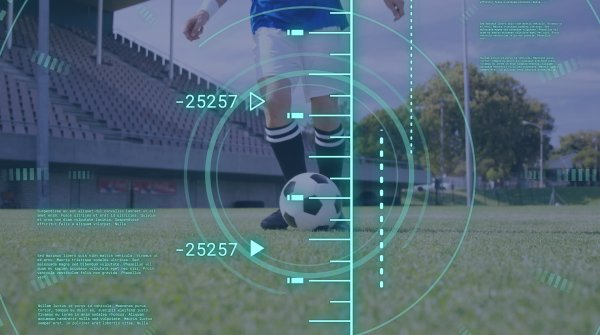 SportsTechUnlocking the Future of Sports with AI
SportsTechUnlocking the Future of Sports with AI
- ISPO awards
- Mountain sports
- Bike
- Design
- Retail
- Fitness
- Health
- ISPO Job Market
- ISPO Munich
- ISPO Shanghai
- Running
- Brands
- Sustainability
- Olympia
- OutDoor
- Promotion
- Sports Business
- ISPO Textrends
- Triathlon
- Water sports
- Winter sports
- eSports
- SportsTech
- OutDoor by ISPO
- Heroes
- Transformation
- Sport Fashion
- Urban Culture
- Challenges of a CEO
- Trade fairs
- Sports
- Find the Balance
- Product reviews
- Newsletter Exclusive Area
- Magazine
